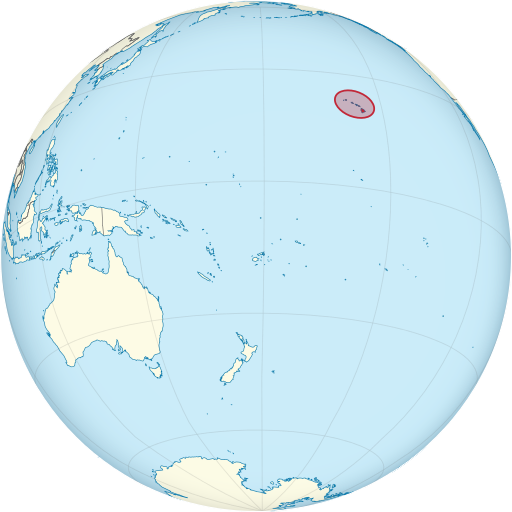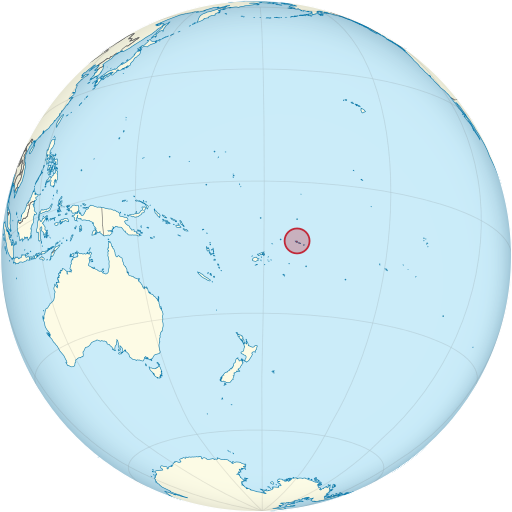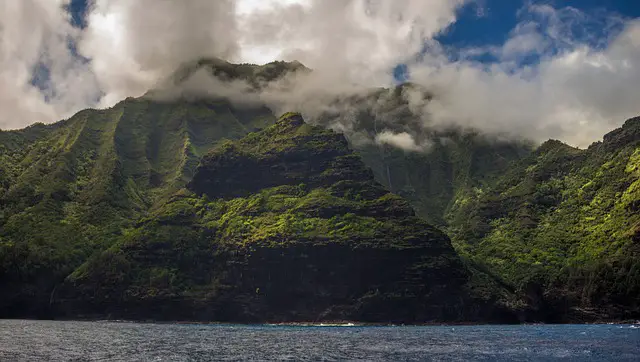Hawaiian and Samoan cultures are distinct Pacific Island traditions with unique languages, customs, and histories.
TL;DR Hawaiian Vs. Samoan
Hawaiian and Samoan are distinct Pacific Island cultures with unique languages, traditions, and histories. Hawaiians originate from Hawaii and have a rich Polynesian heritage, known for hula dance and lua (martial art). Samoans hail from Samoa and American Samoa, with strong communal values and traditional tattoo art (pe’a). While both share Pacific Islander roots, their specific cultures, languages, and customs are distinct and reflect their respective island histories.
Geographical and Historical Background
Discover the fascinating geographical and historical background that sets Hawaiian and Samoan cultures apart. From the ancient origins of Hawaiian traditions to the historical significance of Samoan heritage.
Origins of Hawaiian

The roots of the Hawaiian language can be traced back to the Polynesian people who migrated to the Hawaiian Islands from other Pacific islands.
These early settlers brought with them their Polynesian language and culture, which eventually developed into what is now recognized as the Hawaiian language.
Hawaiian people cultivated a unique language that displayed similarities to other Polynesian languages like Samoan and Maori, while also possessing distinct characteristics.
The origins of the Hawaiian language can be observed through the resemblances it shares with other Polynesian languages, as well as the influences it absorbed from other cultures that interacted with the Hawaiian people over time, including English and Portuguese.
Although primarily transmitted orally through generations, the language was later written down and standardized in the early 19th century with the assistance of Christian missionaries.
Today, the origins of the Hawaiian language are commemorated and safeguarded through endeavors to revive its usage and incorporate it into the curriculum of schools. It is regarded as an integral part of the cultural identity of the Hawaiian people and helps maintain their connection to their ancestral roots.
Despite encountering challenges and periods of decline, the origins of the Hawaiian language continue to be revered and nurtured by the Hawaiian community.
Origins of Samoan

The origins of Samoan can be traced back to the Austronesian language family. The Samoan people are believed to be descended from the Lapita people who migrated from Southeast Asia to the Pacific Islands around 1500 BCE. The Lapita people, known for their navigation and seafaring skills, settled in Samoa as part of their migration across the Pacific.
Samoan, closely related to other Polynesian languages like Tongan, Maori, and Hawaiian, shares a common ancestry with these languages and exhibits similar grammatical structures and vocabulary.
Samoan culture has been influenced by the distinctive geographical and historical context of the islands. Colonization and the interactions with other cultures, including European and American influences, have played a significant role in shaping the Samoan archipelago‘s rich history. Despite these external influences, Samoan culture has managed to maintain its unique identity and traditions.
Geographical Distribution
Geographical distribution plays a significant role in understanding the Hawaiian and Samoan populations. To comprehend their respective regions, it is crucial to examine their specific locations.
In terms of the Hawaiian population, they are mainly concentrated in Hawaii, a cluster of islands situated in the Pacific Ocean. The primary islands of Hawaii, including Oahu, Maui, and Kauai, are inhabited by the majority of Hawaiians. Additionally, Hawaiian communities can be found in certain regions of the mainland United States, particularly areas with substantial Polynesian populations like California and Utah.
On the other hand, the Samoan population is primarily found in the islands of Samoa, which consist of two distinct entities: the independent nation of Samoa and American Samoa, a US territory. The majority of Samoans reside in these islands, with American Samoa having a larger population compared to independent Samoa. Moreover, sizable Samoan communities exist in New Zealand, Australia, and the United States, especially in Hawaii, California, and Utah.
Historical factors such as colonization, migration, and economic opportunities have heavily influenced the geographical distribution of both Hawaiians and Samoans. These populations have experienced diaspora over time, with individuals and families settling in various regions across the globe. Despite this dispersion, these communities maintain strong connections to their ancestral lands and have established cultural hubs in different parts of the world.
Interestingly, the Samoan population in California has undergone significant growth over the years, making it one of the largest Samoan communities outside of Samoa and American Samoa. This fact highlights the impact of geographical distribution on the dispersal and concentration of populations.
Historical Significance
The historical significance of Hawaiian and Samoan cultures is deeply profound and can be observed in various aspects of their societies.
1. Historical Significance in Hawaiian Culture:
- – The historical significance of Hawaiian culture can be traced back to the ancient Polynesians who settled on the Hawaiian Islands around 1500 AD.
- – The arrival of Captain James Cook in 1778 marked the beginning of significant contact with Europeans and a notable shift in Hawaiian history.
- – The establishment of the Kingdom of Hawaii in 1810 by King Kamehameha I, who unified the Hawaiian Islands under one rule, is of great historical significance.
- – The 19th century witnessed significant changes in Hawaiian society due to the influence of missionaries, the establishment of a constitutional monarchy, and the increasing presence of American influence.
- – The overthrow of the Hawaiian Kingdom in 1893 and subsequent annexation by the United States in 1898 have had lasting effects on Hawaiian identity and the sovereignty movements.
2. Historical Significance in Samoan Culture:
- – Samoan culture possesses a long and rich history that can be traced back over 3,000 years, making its historical significance quite notable.
- – The traditional social and political structure of Samoa, known as the matai system, has been a central aspect of Samoan society for centuries, carrying immense historical significance.
- – The arrival of European explorers and missionaries in the 18th and 19th centuries brought significant changes to Samoan life, including the introduction of Christianity and the increasing influence of Western powers, further adding to its historical significance.
- – Samoa gained independence in 1962 and has since developed a unique cultural identity that blends traditional Samoan values with modern influences, thus continuing its historical significance.
True story: In the late 19th century, Princess Lili’uokalani, the last reigning monarch of the Kingdom of Hawaii, composed the famous Hawaiian song “Aloha ‘Oe” while under house arrest in her palace after the overthrow of the Hawaiian Kingdom. This song, often referred to as the “Farewell Song,” showcases the resilience and enduring spirit of the Hawaiian people in the face of adversity, emphasizing the historical significance of Hawaiian culture. It has become a symbol of Hawaiian culture and its historical significance, serving as a reminder of the kingdom’s loss and the desire for sovereignty to be restored. Even today, “Aloha ‘Oe” remains cherished and performed as a tribute to Hawaii’s past and as a symbol of the enduring spirit of the Hawaiian people.
Language and Culture
Language and culture weave together in a vibrant tapestry, highlighting the distinctions between Hawaiian and Samoan communities. In this section, we will immerse ourselves in the rich traditions and customs of both cultures. Discover the unique language differences that set them apart and delve into the captivating world of cultural traditions. Uncover the intricate social structures and values that shape their societies, as well as the captivating art and music that reflect their identities. Embark on a journey of exploration and gain a deeper understanding of the fascinating Hawaiian and Samoan cultures.
Language Differences
The table below highlights some of the key language differences between Hawaiian and Samoan:
| Language Differences | |
| Hawaiian | Samoan |
| Hawaiian belongs to the Polynesian subfamily of Austronesian languages. | Samoan belongs to the Polynesian subfamily of Austronesian languages. |
| It has a smaller phoneme inventory compared to Samoan, with 13 consonants and 5 vowels. | It has a larger phoneme inventory compared to Hawaiian, with 16 consonants and 7 vowels. |
| The writing system used for Hawaiian is based on the Latin alphabet. | The writing system used for Samoan is also based on the Latin alphabet. |
| Hawaiian has a glottal stop (‘okina) as a separate phoneme, which is not present in Samoan. | Samoan does not have a glottal stop as a separate phoneme. |
| Hawaiian has a system of long and short vowels, while Samoan only has long vowels. | Samoan only has long vowels. |
| Hawaiian has a larger vocabulary available, as the language has been more extensively documented and revived. | Samoan has a smaller vocabulary available due to limited documentation and fewer revival efforts. |
Understanding these language differences is important in appreciating the unique identities of Hawaiian and Samoan cultures. By recognizing and celebrating these differences, we can enhance cultural understanding and promote inclusivity.
Cultural Traditions
Cultural traditions play a significant role in both Hawaiian and Samoan societies. These cultural traditions are deeply rooted in their history, language, and social structure. Here are some key aspects of their cultural traditions:
1. Language and storytelling: Both Hawaiians and Samoans have rich oral traditions, with storytelling being a fundamental part of their cultures. This includes myths, legends, and historical narratives that are passed down from generation to generation.
2. Dance and music: Traditional dance and music are vital expressions of cultural identity for both Hawaiians and Samoans. Hula, a traditional Hawaiian dance accompanied by chants and music, and Samoan dances like the Siva and Taualuga are performed at various occasions and celebrations, preserving their cultural traditions.
3. Tattoos and body art: Cultural traditions regarding tattoos hold great significance in both Hawaiian and Samoan societies. In Hawaiian culture, tattoos, known as “kakau,” are a way to honor ancestors and tell their stories, while Samoan tattoos, known as “tatau,” symbolize individual achievements and social status.
4. Family and community values: Both cultures place a strong emphasis on the importance of family and community. Extended family networks, known as “ohana” in Hawaiian and “aiga” in Samoan, are highly valued and central to everyday life and decision-making, reflecting their cultural traditions.
5. Traditional ceremonies and rituals: Both Hawaiians and Samoans have deeply ingrained ceremonies and rituals that mark important milestones in life. These include blessings, feasts, naming ceremonies, and other rites of passage, preserving their cultural traditions.
Understanding and appreciating these cultural traditions is essential in recognizing the unique heritage of both Hawaiian and Samoan communities. By embracing and preserving these cultural practices, they can continue to thrive for generations to come.
Both Hawaiian and Samoan cultures have a long history with rich cultural traditions that have evolved over time. In Hawaiian history, the islands were originally settled by Polynesians who arrived from other Pacific islands, bringing their language, customs, and traditions with them, thus shaping their cultural traditions.
Samoan history dates back even further, with evidence of human settlement in the region dating back thousands of years, highlighting the deep-rooted nature of their cultural traditions.
These ancient cultures have continued to develop and adapt, blending their indigenous traditions with influences from colonialism and globalization, resulting in their unique cultural traditions today.
Today, both Hawaiian and Samoan communities take great pride in their cultural heritage and actively engage in efforts to preserve and promote their unique traditions in the face of a rapidly changing world.
Social Structure and Values
In Hawaiian and Samoan cultures, social structure and values are the foundation on which communities thrive and connect. These cultures place immense importance on the bonds of family and community, which foster a strong sense of unity and collective responsibility.
The social structure within these cultures is often hierarchical, with elders and leaders commanding utmost respect. This is exemplified in Hawaiian society through the system of ali’i (chiefs) and kapu (taboos) that govern various aspects of life. Similarly, Samoan society values hierarchy, with matai (chiefs) holding significant power and authority within their respective villages.
Respect, humility, and reciprocity are deeply embedded values in both Hawaiian and Samoan cultures. These values direct individuals in their interactions with others, highlighting the significance of treating one another with kindness and compassion.
Moreover, both cultures highly regard environmental stewardship and the connection to nature. They consider the land and sea as sacred, thus demonstrating deep respect and a commitment to protection. The practices of preserving the environment are essential for sustaining community balance and well-being.
To develop genuine relationships and cultivate a sense of unity and harmony with Hawaiian and Samoan communities, it is crucial to demonstrate respect and appreciation for their social structure and values.
Dedicate time to understand their traditions, customs, and protocols, and approach interactions with humility and an open mind. Actively listen, value their perspectives, and learn from their experiences when establishing authentic connections and relationships. By embracing cultural sensitivity and understanding, we can acknowledge the similarities and celebrate the diversity that distinguishes Hawaiian and Samoan cultures.
Art and Music
Art and music play a significant role in both Hawaiian and Samoan cultures, showcasing their rich cultural heritage and traditions. Here are some key aspects that highlight the importance of art and music in these Pacific Island cultures:
Both Hawaiian and Samoan art and music offer a glimpse into the history, beliefs, and values of these cultures. They serve as a means to preserve and celebrate their unique identities, showcasing the beauty of their artistry and the power of their harmonious melodies. |
Physical and Genetic Variations
When it comes to the differences between Hawaiian and Samoan communities, exploring the physical and genetic variations is key. In this section, we’ll uncover the unique physical features that distinguish these two groups and delve into the fascinating genetics and ancestry that shape their identities. Prepare to be amazed by the vibrant tapestry of diversity found within these rich cultures.
Physical Features
When it comes to physical features, both Hawaiians and Samoans have similarities and differences that distinguish them from each other.
| Hawaiians | Samoans |
| Hawaiians generally exhibit a range of skin tones, varying from medium to dark complexion. | Samoans, on the other hand, also display a similar range of skin tones, typically ranging from light to dark. |
| Hawaiians often possess straight or wavy hair that can be dark brown or black. | Samoans, likewise, have straight or wavy hair, but it tends to be darker and thicker in comparison. |
| Hawaiians showcase diverse eye colors, such as brown, hazel, and green. | Samoans have a higher prevalence of brown eyes, although other eye colors can also be found. |
| Hawaiians exhibit a variety of body types, ranging from slim to more robust builds. | Samoans are renowned for their muscular and robust builds, with a higher prevalence of larger body types. |
It is crucial to recognize that these physical features can greatly vary within both Hawaiian and Samoan communities. These cultures embrace diversity and inclusivity, welcoming individuals from different ethnic backgrounds. While this table provides a general overview, it is essential to understand that one’s identity or cultural belonging cannot be solely determined by their physical appearance.
Genetics and Ancestry
Genetics and Ancestry have significant roles in comprehending the cultural history of Hawaiian and Samoan people. The cultural heritage of these communities is reflected in their unique origins and migration patterns, determined by their genetic makeup. Research indicates that both populations share a Polynesian ancestry, originating from a common ancestral group that migrated from Southeast Asia thousands of years ago.
DNA analysis has enabled researchers to identify specific genetic markers that are prevalent among Hawaiians and Samoans. An excellent example is the Austronesian Genetic Marker (AGM), which is common in both populations, indicating their shared ancestry. Additionally, studies have revealed genetic diversity within these communities, illustrating the influence of intermarriage and colonization throughout their history.
The ancestry of Hawaiians and Samoans is a source of pride and cultural identity. Family genealogies, also known as “genealogy chants” or “genealogy recitation,” hold immense value in both cultures, as they trace lineage back to ancestral figures, emphasizing the significance of ancestry and kinship connections.
Appreciating the genetic and ancestral roots of Hawaiian and Samoan people contributes to a deeper understanding of their cultural traditions, values, and social structures. Such exploration sheds light on the rich history and enduring connections between these communities and their Polynesian heritage.
Both the Hawaiian and Samoan people share a Polynesian ancestry, tracing their roots back to Southeast Asia. Genetic studies have provided valuable insights into their migration patterns and genetic diversity. The significance of ancestry and the preservation of genealogical records are deeply ingrained in their cultural traditions. Exploring genetics and ancestry allows us to truly appreciate the profound connections between these communities and their shared Polynesian heritage.
Food and Cuisine
Indulge in a culinary journey as we explore the vibrant world of Hawaiian and Samoan cuisine. From mouth-watering traditional dishes that reflect the rich Hawaiian heritage to the exotic flavors of Samoa, each sub-section will uncover the unique tastes and cooking techniques cherished by these Pacific Island cultures. Get ready to savor the authentic flavors and learn about the ingredients that make these cuisines truly extraordinary.
Traditional Hawaiian Dishes
Traditional Hawaiian Dishes are an essential part of the island’s rich culinary heritage. These dishes highlight the distinct flavors and ingredients that are cherished by the Hawaiian people.
- Poi: A traditional staple made from taro root, poi has a smooth and slightly fermented texture. It is often served as a side dish or used as a base for other Traditional Hawaiian Dishes.
- Kalua Pig: This dish involves cooking a whole pig in an underground oven called an imu. The meat becomes tender and flavorful, often seasoned with sea salt and served with Traditional Hawaiian Dishes accompaniments.
- Laulau: Laulau consists of pork, fish, or chicken wrapped in taro leaves and then cooked in an imu. The result is a delicious and savory bundle of flavors that exemplifies Traditional Hawaiian Dishes.
- Lomi Lomi Salmon: This refreshing dish features diced salmon mixed with tomatoes, onions, and sometimes peppers. Lomi Lomi salmon is vibrant and tangy, often served as a side dish or with Traditional Hawaiian Dishes.
- Haupia: Haupia is a coconut-based dessert with a firm jelly-like texture. It is often served as squares or used as a topping for other Traditional Hawaiian Dishes desserts.
If you find yourself wanting to experience Traditional Hawaiian Dishes, be sure to try these iconic dishes. They provide a glimpse into the authentic flavors and culinary traditions of the islands. Embrace the rich cultural heritage and savor the deliciousness of these Traditional Hawaiian Dishes.
Traditional Samoan Dishes
Traditional Samoan dishes are known for their use of fresh ingredients and rich flavors.
Palusami is a staple in Samoan cuisine, made from taro leaves cooked in coconut cream. Oka is another popular dish, consisting of raw fish marinated in citrus juice and coconut cream. For dessert, Pani Popo is a beloved choice, with its sweet coconut buns baked in a coconut caramel sauce. Sua Fa’i, on the other hand, offers a creamy coconut and tapioca dessert. Lastly, Sapa Sui is a savory pork dish cooked in a flavorful sauce. These traditional Samoan dishes beautifully showcase the unique flavors and cultural heritage of Samoa.
Fun fact: Samoan cuisine not only reflects the local Samoan culture but also incorporates influences from Polynesia, Asia, and Europe.
Common Ingredients and Cooking Techniques
| Common Ingredients | Cooking Techniques |
| Poi (taro paste) | Steaming, boiling, pounding |
| Luau leaves (taro leaves) | Boiling, steaming, simmering |
| Coconut milk | Extracting, grating, blending |
| Kalo (taro root) | Roasting, baking, boiling |
| Pineapple | Slicing, grilling, juicing |
| Seafood (e.g. fish, crabs) | Grilling, frying, baking |
| Pork (e.g. kalua pig) | Marinating, slow-roasting |
When it comes to traditional Hawaiian and Samoan dishes, there are certain common ingredients and cooking techniques that are used.
Common ingredients in Hawaiian cuisine include poi (taro paste), luau leaves (taro leaves), coconut milk, kalo (taro root), pineapple, seafood (e.g. fish, crabs), and pork (e.g. kalua pig).
Cooking techniques used in these dishes include steaming, boiling, pounding, boiling, steaming, simmering, extracting, grating, blending, roasting, baking, slicing, grilling, juicing, frying, and slow-roasting.
These traditional ingredients and cooking techniques are essential in creating the unique flavors and textures of Hawaiian and Samoan dishes.
If you’re looking to explore the culinary traditions of these cultures, try dishes that incorporate these common ingredients and cooking techniques.
Experiment with different flavors and methods of preparation to truly experience the rich and diverse cuisines of Hawaii and Samoa.
Religion and Beliefs
Religion, a realm of profound beliefs and spiritual practices, plays a significant role in shaping cultures around the world. In this section, we will explore the diverse religious and belief systems found in Hawaiian and Samoan cultures. Discover fascinating insights into Hawaiian belief systems, gain a deeper understanding of Samoan religious practices, and explore the profound influence of these faiths on the daily lives of the people. Prepare to delve into the rich tapestry of religious traditions and their impact on the cultural fabric of these vibrant communities.
Hawaiian Belief Systems
Hawaiian Belief Systems are deeply ingrained in the connection between the people, the land, and the spiritual realm. The Hawaiians have a strong faith in the existence of various gods and goddesses, referred to as “akua,” who govern different aspects of life, such as nature, fertility, and war. The concept of “mana,” a spiritual power present in all living and non-living things, is also deeply rooted in their beliefs. It is believed that individuals can nurture their own mana through spiritual practices and rituals.
The importance of “kapu,” sacred laws governing social behavior, is another fundamental aspect of Hawaiian Belief Systems. These laws dictate the proper way to interact with others, emphasize respect for the environment, and prescribe appropriate conduct during sacred ceremonies. Violation of kapu is considered a grave offense and can have severe consequences.
The interconnectedness of all living beings is a significant belief within Hawaiian Belief Systems. Hawaiians firmly believe that everything is interconnected, and actions taken in one aspect of life can have far-reaching consequences in other areas. This belief fosters a strong sense of responsibility towards the community and the environment.
Hawaiian Belief Systems revolve around spirituality, harmony, and a deep respect for nature. They serve as a guiding principle for individuals to live in balance with themselves, others, and the world around them. Today, these belief systems continue to play a significant role in shaping the cultural and social fabric of Hawaiian society.
Samoan Belief Systems
Samoan Belief Systems are intricately intertwined with ancestral worship and a profound bond with nature. The Samoans firmly embrace the existence of spiritual beings referred to as “atua,” who exert their influence on their day-to-day existence. These atua can encompass ancestors, deities, or mighty natural forces. It is firmly believed by Samoans that establishing and maintaining a harmonious relationship with these atua is pivotal for their personal well-being as well as the prosperity of their communities.
One crucial aspect of Samoan Belief Systems is the notion of “mana,” which denotes a supernatural power or energy. According to belief, individuals have the ability to nurture their mana through diverse rituals and practices. The possession of mana is viewed as a wellspring of authority and influence within the community.
Traditions inherent in Samoan Belief Systems encompass the revered “ava ceremony,” a ritual in which a libation made from the roots of the ava plant is shared in a ceremonial gathering. This ritual holds sacred significance and is often conducted to exhibit reverence towards the atua and seek their blessings.
The concept of “tapa” holds great significance within Samoan Belief Systems. Tapa signifies a type of fabric crafted from the bark of the mulberry tree. It is considered inherently sacred and finds usage in diverse ceremonies, ranging from weddings to funerals.
Samoan Belief Systems deeply reflect a spiritual connection with ancestors, nature, and the realm of the spirits. These beliefs occupy a pivotal role in the everyday lives of Samoans, exerting influence over their actions, relationships, and overall well-being.
Influence of Religion on Daily Life
Religion plays a significant role in the daily lives of both Hawaiians and Samoans.
Hawaiian and Samoan communities are deeply connected to their religious beliefs, which profoundly influence their actions and decisions.
Both cultures have unique belief systems and practices that have a substantial impact on various aspects of daily life.
- In Hawaiian culture, the belief in “kapu” or sacredness greatly shapes societal norms and behaviors, effectively promoting respect for nature and others. This
- influence is evident in their daily interactions and commitment to environmental preservation.
- Similarly, Samoan belief systems place significant emphasis on the importance of family, communal harmony, and reverence for elders. These values act as guiding principles in their daily interactions and decision-making processes.
- Religion also holds a significant role in social gatherings and ceremonies. Both Hawaiians and Samoans have rituals and traditions that form an integral part of their religious practices.
- These beliefs and practices foster a strong sense of community and provide individuals with a deep-rooted sense of identity, belonging, and purpose.
- The profound influence of religion on daily life contributes significantly to the preservation of cultural traditions and values within both Hawaiian and Samoan societies.
Relationship with Nature and Environment
When it comes to exploring the relationship between Hawaiian and Samoan cultures, their deep connection to nature and the environment takes center stage. In this section, we’ll dive into their profound ties to the land and sea, as well as their commitment to environmental preservation practices. Get ready to discover how these cultures have cultivated a harmonious coexistence with nature and find inspiration in their sustainable ways of life.
Connection to Land and Sea
The connection to land and sea is a fundamental aspect of Hawaiian and Samoan cultures. Both cultures have deep-rooted traditions and beliefs that revolve around their relationship with the natural environment. Here are some key points to understand their connection to land and sea:
- Hawaiians and Samoans hold a profound respect for the land and sea, recognizing them as sacred and essential sources of life. They believe that the land and sea are interconnected and provide sustenance for their communities, showcasing the profound connection they share.
- Both cultures have traditionally practiced sustainable methods of land and sea management, ensuring the preservation and replenishment of resources. They have developed techniques like sustainable fishing practices and responsible agriculture, exemplifying their commitment to the connection between land and sea.
- The land and sea hold great cultural significance in both Hawaiian and Samoan traditions, inspiring various art forms, music, dance, and storytelling. Through these expressions, they convey their deep spiritual and ancestral connections to these natural elements, strengthening the bond between their cultures and the land and sea.
- The land and sea provide a rich variety of ingredients for traditional Hawaiian and Samoan cuisine. Locally sourced fruits, vegetables, fish, and other marine delicacies are incorporated into unique dishes, showcasing the connection between food and the land and sea.
- Rituals and ceremonies in Hawaiian and Samoan cultures revolve around the land and sea. Blessings before fishing or farming activities, ceremonies to honor the harvest, and rituals to show appreciation to ancestral spirits connected to the natural elements further emphasize their connection to the land and sea.
- Hawaiians and Samoans have become environmental stewards, actively engaging in conservation and preservation efforts. They work tirelessly to protect their land and sea from pollution, overfishing, and habitat destruction, demonstrating their commitment to maintaining the connection to land and sea.
The connection to land and sea is deeply ingrained in the cultural fabric of Hawaiian and Samoan societies. It shapes their values, traditions, and way of life, emphasizing the importance of maintaining a harmonious relationship with the natural world around them.
Environmental Preservation Practices
Environmental preservation practices are an integral part of both Hawaiian and Samoan cultures, reflecting their profound admiration for the natural surroundings. The following examples showcase how these cultures prioritize environmental preservation:
- Conservation of land and sea resources: Both cultures deeply value their connection to the land and sea, emphasizing the conservation of these vital resources. They establish protected areas, implement sustainable fishing practices, and promote responsible tourism to safeguard the delicate ecosystems.
- Traditional agriculture: Sustainable agriculture practices have a long-standing history among Hawaiians and Samoans. They employ traditional methods that minimize chemical usage and protect soil and water quality, ensuring environmentally friendly food production.
- Protection of endangered species: Recognizing the significance of safeguarding unique flora and fauna, both cultures make efforts to protect and restore habitats for endangered species, securing their survival for generations to come.
- Water conservation: Water, being a precious resource on islands, receives great emphasis in both Hawaiian and Samoan cultures. Practices such as rainwater harvesting, efficient irrigation techniques, and public awareness campaigns promote responsible water usage.
- Community involvement: Environmental preservation practices extend beyond government initiatives in Hawaiian and Samoan cultures. Communities actively engage in waste management programs, beach cleanups, and reforestation efforts.
Fact: By 2045, Hawaii aims to source 100% of its electricity from renewable energy sources, solidifying its position as a leader in clean energy initiatives.
Contemporary Interactions and Influences
Contemporary interactions and influences in Hawaiian and Samoan cultures reveal intriguing dynamics shaped by historical events, colonialism, and western influences. Delve into the impact of colonization and the infiltration of Western customs, as well as the fascinating effects of tourism and cultural exchanges. Explore how these factors have shaped the present-day landscapes of Hawaii and Samoa, illuminating unique aspects of their customs, traditions, and societal norms. Brace yourself for a captivating journey into the intertwining paths of these vibrant cultures.
Impact of Colonialism and Western Influences
The significant impact of colonialism and Western influences on Hawaiian and Samoan cultures cannot be denied. These external forces have played a crucial role in shaping various aspects of both societies, including language, religion, social structure, and values.
Language: The dominance of English as a result of colonialism and Western influences has brought about changes in native languages. English has become more prevalent in daily communication in both Hawaii and Samoa.
Religion: The introduction of Christianity to these regions through colonialism has become a significant aspect of Hawaiian and Samoan cultures. It has greatly influenced daily life, beliefs, and traditions.
Social Structure and Values: The influence of Western influences, such as colonial governance and capitalism, has caused significant alterations in traditional social structures in both Hawaii and Samoa. These changes have affected power dynamics, land ownership, and economic systems.
Art and Music: Western influences have introduced new artistic styles and musical genres into Hawaiian and Samoan cultures. This has led to the incorporation of these influences into traditional practices, resulting in unique blends of indigenous and Western art forms.
Education: The impacts of colonialism and Western influences can also be seen in the introduction of formal education systems in both regions. This has had an effect on the transmission of cultural knowledge and values, as well as the development of skills and professions.
The impact of colonialism and Western influences on Hawaiian and Samoan cultures is indeed complex and varied, with both positive and negative consequences. Although certain aspects of indigenous cultures have been disrupted or diminished, there have also been opportunities for cultural exchange and adaptation.
Tourism and Cultural Exchanges
Tourism and cultural exchanges: Both Hawaiian and Samoan cultures attract a significant amount of tourism each year, providing opportunities for cultural exchanges between locals and visitors. Visitors are drawn to the unique landscapes, vibrant traditions, and warm hospitality of both destinations. Travelers can participate in traditional ceremonies, learn about indigenous arts and crafts, and taste local cuisine, enhancing their understanding of Hawaiian and Samoan cultures.
Promotion of Cultural Heritage: Tourism plays a vital role in preserving and promoting the cultural heritage of both Hawaiian and Samoan communities through cultural events, performances, and festivals. These events showcase traditional dances, music, and storytelling to a global audience, contributing to the preservation of traditional knowledge from one generation to the next.
Economic Impact: The tourism industry significantly contributes to the economies of both Hawaiian and Samoan communities. Local businesses, such as hotels, restaurants, and souvenir shops, thrive on the influx of tourists, creating employment opportunities and boosting the local economy through tourism and cultural exchanges.
Sustainable Tourism Practices: Both destinations are committed to sustainable tourism practices to protect their natural and cultural resources. Efforts such as responsible waste management, conservation of ecosystems, and educating visitors about local customs and traditions ensure that tourism and cultural exchanges are both enjoyable and sustainable.
Preservation of Traditional Knowledge: Cultural exchanges through tourism allow for the preservation and transmission of traditional knowledge from one generation to the next. Locals share their wisdom, stories, and craftsmanship with visitors, ensuring that their cultural heritage remains alive and valued by promoting tourism and cultural exchanges.
Frequently Asked Questions
What’s the difference between Hawaiian and Samoan languages?
Hawaiian and Samoan languages are both Austronesian languages, but they have diverged over time and now share few phonetic similarities. Hawaiian derives from the Marquesan language, while Samoan has its own unique roots. They also differ in the use of certain letters, such as ‘k’ in Hawaiian and ‘g’ in Samoan.
What are the cultural differences between Hawaiians and Samoans?
Hawaiians and Samoans have distinct cultural differences. Traditional houses, dances, and languages vary between the two cultures. Hawaiians are American Polynesians with English influence, while Samoans are indigenous Polynesian people from the Samoan archipelago with their own unitary democracy.
Are Hawaiians and Samoans of the same nationality?
No, Hawaiians and Samoans are not of the same nationality. Hawaiians are considered Americans as Hawaii is a U.S. state, while Samoans are from the archipelago of Samoa and have their own separate countries, American Samoa and the Independent State of Samoa.
What is the population difference between American Samoa and Samoa?
American Samoa has a population of just over 46,000, while Samoa (Independent State of Samoa) has a population of over 200,000. Despite being located in the same region, they have significant differences in population size.
Where are Hawaii and Samoa geographically located?
Hawaii is a U.S. state in the Pacific Ocean, while Samoa is a separate country located in the South Pacific Ocean. They are more than 2,500 miles apart, with Oceania being the region where both are situated, near Australia.
What is the difference between American Samoa and the Independent State of Samoa?
American Samoa is an unincorporated territory of the United States, while the Independent State of Samoa is a unitary democracy. They have different governance systems and political statuses.
Image Credits
Featured Image By – Pexels from Pixabay
Image 1 By – TUBS, CC BY-SA 3.0 , via Wikimedia Commons
Image 2 By – TUBS, CC BY-SA 3.0 , via Wikimedia Commons









